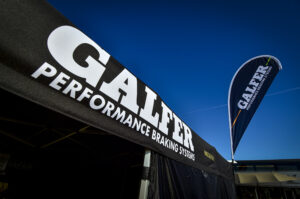MISANO ADRIATICO RN, Italy — The Misano World Circuit Marco Simoncelli, this weekend’s stop on the MotoGP tour, is a moderately demanding circuit on brakes, according to the Brembo technicians who work closely with all the MotoGP World Championship riders,
On a scale of 1 to 6, it is rated 4 on the difficulty index even if the longest straight is only 530 meters (579 yards) long and stops the bikes from going over 300 km/h (186 mph).
There are numerous braking points as well as other corners where the riders do not brake but have to completely ease up on the throttle.
Bagnaia’s braking secrets
The last two editions of the San Marino and Riviera di Rimini GP were won by Francesco Bagnaia who in 2022 became the first Italian rider to win the World MotoGP Championship on an Italian motorcycle. The Ducati rider is considered to be one of the greatest brakers in recent years both in terms of explosiveness and precision.
Bagnaia explained that every braking moment can be divided into three different stages: the first braking with the motorcycle in a straight line, the second when coming into the turn, and the third when coming out of the turn with the brakes released.
In order to be one of the best brakers before leaning his Desmosedici into the turn, the Piedmontese rider puts piles of energy onto the front wheel. He also loves using the rear brake: on the left turns, he uses the pedal and on the right ones, the thumb master cylinder which he also uses when coming out of the bend to control acceleration.
Five seconds to set up the Quercia turn
Of the nine braking sections at the Misano World Circuit Marco Simoncelli, two are classified as demanding on the brakes, two are of medium difficulty, and the remaining vive are not very demanding.
The hardest braking point for the MotoGP bikes is on turn eight (Quercia): the prototypes go from 291 to 83 km/h (181 to 51.5 mph) in 5.1 seconds covering a distance of 246 meters (269 yards).
To do this, riders apply a load of 6 kg (12 pounds) to the brake lever and are subjected to 1.6 G deceleration, while the brake fluid pressure soars to 11.5 bar.








